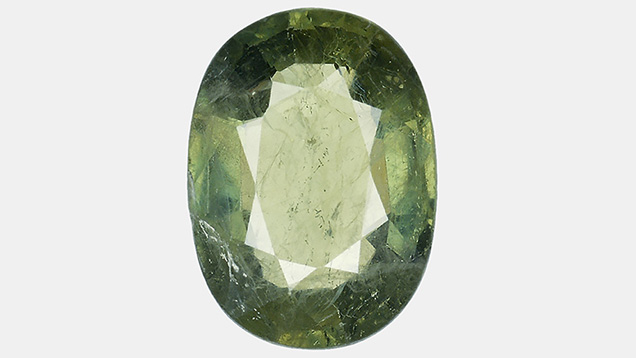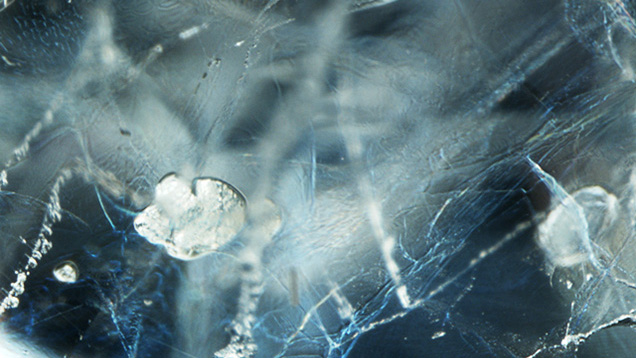Green Sapphire Filled with Glass

Standard gemological testing gave an RI of 1.762–1.770, a hydrostatic SG of 4.00, a prominent absorption band at 450 nm, and inert reaction to long- and short-wave UV. These properties are consistent with natural corundum. Microscopic examination, however, revealed numerous low-relief cracks throughout the stone that showed a prominent blue flash effect, as well as several flattened gas bubbles trapped within the filler (figure 2). Also observed were reflective rutile needles.

Figure 2. Flattened gas bubbles and a blue flash effect suggest that this stone contains significant amounts of lead glass, which was confirmed by EDXRF spectroscopy. Photo by Phil York; field of view 1.57 mm.
To determine if a leaded glass was used to hide the cracks in the corundum, we applied EDXRF spectroscopy, which confirmed the presence of lead. UV-visible spectroscopy was used to explore whether the color was intrinsic to the corundum (as in glass-filled ruby) or intrinsic to the filler glass (as in sapphire filled with a lead glass colored by cobalt). The UV-Vis spectrum revealed a prominent 450 nm series related to Fe3+ pairs responsible for the yellow component of the green color, which was consistent with the overall green bodycolor of the stone. The blue component was observed as diffuse planar color zoning unrelated to the network of fractures. This combination of natural yellow and blue components produced the overall green bodycolor.This was the first lead glass–filled green sapphire examined at the Carlsbad laboratory. On a GIA identification report, this would be called a “manufactured product."
.jpg)


